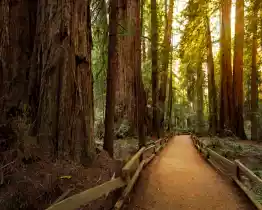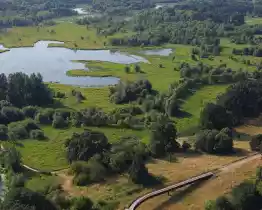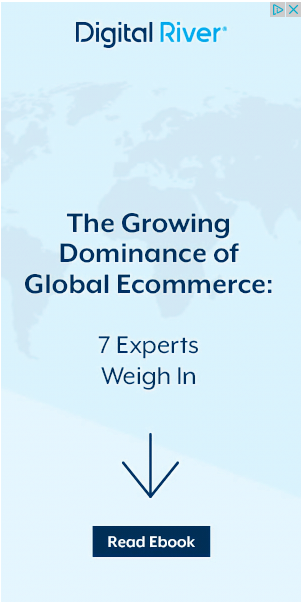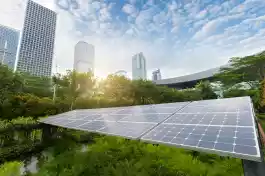Modal Header
- econews
The life cycle of plastic: 10 easy things you can do to reduce plastic waste
Plastic has become a serious global concern over the past decades and, with the equivalent of a truckload of plastic entering the ocean every 60 seconds, it’s clear to see why.
Never before has the planet faced a plastic crisis of this scale. From city streets to Arctic ice sheets and even down to the microplastics in the food we consume; plastic has found a home in every corner of this wonderful blue planet.
With over 1 million marine animals dying from plastic debris every year and estimations that by 2050 there will be more plastic than fish in the ocean, it is no longer a problem the next generation will have to face. It’s time for us to get involved.
Small and large changes have and are already being made in various parts of the world. From recycling to using paper bags or alternative packaging but for all the good that these changes make, are we really doing our best?
A stroll through any supermarket aisle is enough to see the reality that plastic production is clearly exceeding our ability to manage the waste.
Before we get into ways you can help make a difference, let’s first take a look at how plastic is made and why it poses a threat to all life on Earth.
How plastic is manufactured
Plastic is a relatively new material with its history dating back as close as 1909. In just over 100 years it has had an almost endless number of applications finding a use and even adding a helping hand in practically every industry sector, down to medical equipment.
It’s important to note that plastic is not entirely bad, it plays an important role in the supply chain of many goods, offering cheaper alternatives, more variety and a longer shelf life to many perishable products.
That being said, a single piece of plastic requires limited raw materials such as oil and natural gas which are then treated, converted into hydrocarbon monomers and chemically bonded into polymer chains.
A wide range of plastics are blended with additives or plasticizers to change their mechanical, physical and chemical properties to make them heat resistant, bacteria resistant, more flexible or simply to add colour. Of these, plasticizers in particular are often associated with health risks.
The breakdown. How plastic is recycled…or not.
For every person born since the 1950’s, one tonne of plastic has been produced and less than a tenth of this has been recycled.
The biodegradability of plastics depends significantly on the type of plastic and where it ends up. Generally speaking the different types of plastics can be placed under two groups: thermoplastics and thermosets.
Most plastics we know are thermoplastics. Once made, they can be treated and reformed. Thermosets on the other hand cannot be reheated and are almost impossible to recycle.
Thermoplastics can be melted and reformed almost indefinitely, however most of the time plastics can only be recycled a few times before losing their usability.
In order to recycle plastic, thorough sorting is required. Plastic identification codes play a significant role in this process. Once taken to the correct recycling facility, plastics are ground into tiny pieces followed by washing, drying and heating. The result is melted into pellets or transformed into the desired material.
It’s important to clarify that plastic doesn’t ever really decompose; it simply breaks down into smaller and smaller plastic pieces known as microplastics which are plaguing the oceans and making their way into the hungry mouths of marine animals, through the food chain and ultimately to our dinner plates.
Of course recycling is good but what do the real figures say? According to estimations less than 10% of waste plastic is actually recycled. Of the remainder, 12% is incinerated while the rest ends up in landfills and the environment. C02 is released during incineration, contributing further to climate change while plastic dumped into landfills and natural areas leeches nasty chemicals and takes the lives of millions of animals which mistake it for food.
For a better visual this might help: A plastic bag takes 10-20 years to decompose, the plastic rings used for drink cans take 400 years to break down and a single use plastic bottle and disposable diaper take 450 years to decompose. This multiplied by 7 billion puts it all into perspective.
Ways you can help
Going zero plastic is not a realistic option for most of us but there are numerous ways for each of us to lend a helping hand and do our part.
Perhaps the best way to start is by recognizing the amount of plastic we consume in our own homes. Have a look in your kitchen and take note of the amount of single-use plastic you see. Next take a trip to the bathroom, notice how many single-use plastics house your shampoos, soaps, beauty products and much more. Continue throughout the house. You might be shocked.
As stated before, plastic is not entirely bad but once we begin to understand the larger picture and long term effects: manufacturing, recycling (or lack of), the devastating consequences for the environment and the lives it takes, plastic which is used once in its lifetime and then thrown away cannot be justified. The ‘throwaway’ culture we have grown accustomed to is no longer sustainable.
It is not only up to the large corporations and governments to make change. As consumers we have a voice to dictate the direction leading brands need to follow. Every product we buy is a vote for what we wish to support.
Here are 10 easy things you can do today that matter:
- Shop with a tote bag and avoid plastic bags at all costs. Think what happens when 7 billion people believe that one little plastic bag doesn’t make a difference.
- Switch to a bamboo toothbrush. Every plastic toothbrush that has been created since their invention in the 1930’s still exists today!
- Use a reusable water bottle instead of buying water.
- Say no to plastic straws, cups and cutlery. There are plenty of affordable plastic alternatives for restaurants and companies to use nowadays. Price is no longer an excuse.
- Support local farmers and grocery stores. This helps support your community but also reduces the carbon footprint and plastic waste as less of it tends to be used for transportation and storage.
- Buy less food sold in plastic. Many brands are now using plastic alternatives made of sugarcane, corn and others. Spend a little time to discover who they are and show them your support.
- Find alternatives to plastic sandwich bags. Wax film, fabric pouches and other reusable bags are easy to find online.
- Switch to shampoo and soap bars. Non plastic cleaning products are more popular now than ever, you are bound to find something you like that is agreeable to the planet as well.
- Buy natural clothing. Believe it or not the clothing industry is one of the biggest contaminators on the planet and most clothing is plastic derived.
- If you’re a parent or woman find sustainable alternatives to diapers or menstrual material. It can save you hundreds of dollars and the Earth hundreds of years of biodegradation.
Who you can support
The ways to help are many and YOU make a difference. Many organizations across the globe are making huge efforts to clear up this planet so that our children can continue to enjoy the wonders of this earth. 4ocean have been on a mission to clear the ocean of plastic waste for years and their impact is growing by the year. By purchasing a 4ocean bracelet you help pull a pound of trash from the ocean. Other projects are doing similar things. Find some nearby you that you wish to support.
Conclusion
The evil is not plastic but our ignorance to use things with moderation and to see the larger impact of our decisions. Positive changes we make today, when multiplied by millions of people, can turn 100 years of plastic misuse around and be a lesson for all of humanity that compassion and unity is more powerful than the harm we have done.
Thank you for joining us.
DISCOVER

Related Articles
Message
Thanks for signing up. Please confirm your email address, check your inbox and verify your email.



















